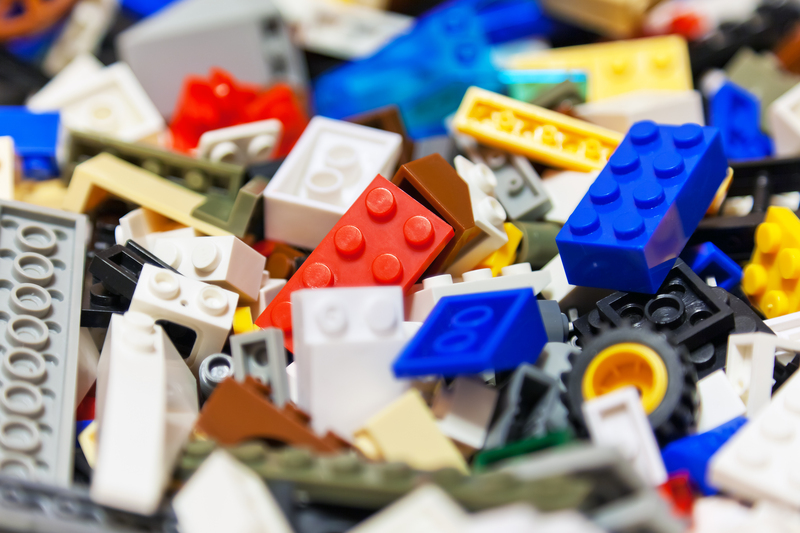Escape the Harm of These Plastics: Protect Your Health and the Planet
Plastics have infiltrated nearly every aspect of our daily lives, but not all plastics are created equal. While some offer convenience, others pose significant risks to our health and the environment. In this comprehensive guide, learn how to escape the harm of dangerous plastics, identify toxic varieties, and discover safer alternatives for a healthier, greener lifestyle.

Understanding the Risks: Why Some Plastics Are Harmful
Plastics are synthetic materials made from polymers, and they're found in food packaging, clothing, toys, electronics, and countless other products. While plastic's versatility and low cost have made it popular, science increasingly shows that certain types, when used improperly or carelessly, can leach hazardous chemicals into food, water, and even the air we breathe.
The main sources of plastic harm can be traced to:
- Chemical additives (like phthalates and bisphenols)
- Micro- and nanoparticles from degraded plastic
- Environmental pollution during production, use, and disposal
Escaping the harm of these plastics requires knowing which to avoid, how to recognize them, and replacing them with safer options.
Plastic Number Codes: Decoding the Danger
Most plastic products are labeled with a recycling code (1 through 7) inside a triangle of arrows. Not every kind is equally safe. Understanding these codes is essential to escape plastic health risks and protect your family.
- 1 - PET/PETE (Polyethylene Terephthalate): Widely used in water bottles and food containers. Generally considered safe for single use, but can leach antimony and phthalates if reused or exposed to heat.
- 2 - HDPE (High-Density Polyethylene): Used in milk jugs and detergent bottles. One of the safer plastics, but not immune to breakdown over time.
- 3 - PVC (Polyvinyl Chloride): Common in clear food wraps, toys, and pipes. Avoid whenever possible! PVC contains phthalates and can release dioxins, both of which are linked to hormone disruption and cancer risk.
- 4 - LDPE (Low-Density Polyethylene): Used in bags and squeeze bottles. Relatively safe but often found as single-use items that contribute to pollution.
- 5 - PP (Polypropylene): Good for yogurt pots and takeout containers. Considered safe for reuse and reheating.
- 6 - PS (Polystyrene/Styrofoam): Found in disposable cups, food trays, and packing materials. Should be avoided! Styrene can leach into food, especially when heated, and may be a possible carcinogen.
- 7 - Other (includes Polycarbonate, BPA, etc.): A catch-all category for plastics not covered above. BPA-containing plastics fall under this number and should be strictly avoided.
The Most Harmful Plastics to Escape Now
From food containers to children's toys, certain plastics stand out as the worst offenders for health and environment. Here's what you need to know to escape the harm of these plastics in your home:
1. Polyvinyl Chloride (PVC) - The Toxic Plastic
- Where it's found: Cling wraps, shower curtains, pipes, synthetic leather, children's toys.
- Health risks: Phthalates and dioxins released from PVC are linked to hormone disruption, reproductive harm, immunity issues, and cancer.
- How to escape: Replace PVC products with safer materials such as food-grade silicone, glass, or 100% cotton. Carefully check labels for recycling code 3 and avoid buying these items.
2. Polystyrene (Styrofoam) - Lightweight, Heavy on Harm
- Where it's found: Foam containers, disposable cups, packaging peanuts.
- Health risks: Styrene can migrate into hot food and beverages, and is a possible carcinogen. Polystyrene is also a major pollutant, breaking up into microplastics easily.
- How to escape: Use paper, glass, stainless steel, or ceramic alternatives; never heat or microwave polystyrene products.
3. Polycarbonate/Bisphenol-A (BPA) - Endocrine Disruptor
- Where it's found: Water bottles, baby bottles, food storage, food can linings.
- Health risks: BPA is a notorious endocrine disruptor, mimicking estrogen and causing fertility issues, metabolic disease, and even increased cancer risk.
- How to escape: Look for products labeled BPA-Free, but be wary - some "BPA-free" plastics use similar substitutes (BPS, BPF) with similar dangers. Opt for glass, stainless steel, or silicone whenever possible.
4. Single-Use Plastics - Convenience with a Cost
- Where it's found: Plastic bags, cutlery, straws, water/soda bottles.
- Environmental risks: Litter oceans and land, degrade into microplastics, harm wildlife and infiltrate the food chain.
- How to escape: Shift to reusable options like cloth shopping bags, bamboo utensils, and refillable bottles.
How to Minimize Your Plastic Exposure Today
Ready to escape harm from harmful plastics? Here's a practical plan to dramatically reduce your exposure and influence positive change for the environment:
Avoid Food Contact with Problem Plastics
- Never microwave food in plastic containers (especially codes 3, 6, and 7). Heat speeds up chemical leaching.
- Store food in glass, stainless steel, or ceramic containers instead of plastic ones.
- Replace plastic wrap with beeswax wraps or silicone lids for covering food.
- Choose fresh or frozen foods over canned goods - many cans are lined with BPA-based plastics.
- Don't drink hot liquids from plastic cups - opt for ceramic or glass mugs.
Switch to Safer Alternatives
- Buy items packaged in glass, cardboard, or metal whenever possible.
- Use bamboo, wood, or metal kitchenware and utensils.
- Replace synthetic clothing with natural fibers like cotton, linen, hemp, or wool.
- Choose personal care products free from microplastics and plastic packaging.
Advocate for Change and Educate Others
- Support legislation banning single-use plastics and hazardous plastic additives.
- Spread information by sharing resources on plastic harm and alternatives in your community.
- Join local clean-up events and plastic pollution initiatives.
The Impact of Harmful Plastics on Your Health
Hormonal and Reproductive Effects
Many problematic plastics leach chemicals known as endocrine disruptors. These substances can mimic, block, or interfere with hormones in the body -- even at low doses. According to scientific studies, the main risks include:
- Reduced fertility in men and women
- Developmental issues in children and fetuses
- Increased risk of hormone-related cancers, such as breast and prostate cancer
Cancer and Chronic Disease Risk
Certain plastic additives (like BPA, phthalates, and dioxins) are classified as possible or probable human carcinogens by agencies like the World Health Organization and EPA. Chronic plastic exposure is also linked to metabolic disorders (including obesity and diabetes), immunity disruption, and behavioral issues in children.
Microplastics: The Invisible Threat
Microplastics and nanoplastics are tiny fragments (less than 5mm) that result from plastic waste breaking down in the environment. These particles have been found in every ecosystem on Earth, and alarmingly, in human blood, organs, breast milk, and the placenta.
- They pass through water treatment systems and enter our tap water.
- Found in seafood, salt, honey, and many foods due to environmental contamination.
- Health effects still being studied, but there are concerns they may cause inflammation, disrupt gut bacteria, or carry toxic chemicals into the body.
Environmental Harm: Why Escaping Plastic is Urgent
Apart from personal health, escaping the harm of plastics is vital to protect ecosystems, wildlife, and future generations:
- Over 8 million tons of plastic enter our oceans annually. Sea birds, turtles, and whales suffer fatal consequences as they ingest or get entangled in plastic waste.
- Plastic pollution does not biodegrade. Instead, it breaks down into smaller particles, threatening the food chain and soil health.
- Production and burning of plastics releases greenhouse gases and toxic emissions, contributing to climate change and air pollution.
Safer Plastic Alternatives & Smart Swaps for Every Home
Shifting to safe materials is easier than you might think. Here are some effective & eco-friendly replacements to help your family escape the harm of these plastics:
In the Kitchen
- Glass containers and bottles - for leftovers, pantry storage, and drinks.
- Stainless steel lunch boxes and water bottles - durable and toxin-free.
- Beeswax wraps, cotton bowl covers, or silicone lids instead of cling film.
- Ceramic, bamboo, or stainless steel utensils instead of plastic cutlery.
- Wooden or stainless dish brushes and cloth towels to replace plastic sponges.
For Kids
- Natural rubber or silicone pacifiers and teethers - check for food-grade/specialty approval.
- Wooden or organic cotton toys - free from paints and finishes containing harmful chemicals.
- Stainless steel or glass baby bottles.
On the Go
- Reusable cloth shopping bags instead of plastic ones.
- Bamboo or metal straws and cutlery.
- Collapsible silicone travel cups and containers (choose food-grade, LFGB-certified silicone, which does not leach harmful substances).

How to Read Labels and Make Informed Choices
To escape the dangers of harmful plastics, always check product labeling:
- Look for recycling codes and avoid #3 (PVC), #6 (PS), and #7 (other, especially polycarbonate).
- Read for BPA-free claims, but double-check for alternative bisphenols (BPS, BPF) that might be just as risky.
- Check for third-party certifications on baby and kitchen products, such as LFGB, FDA, or EU safety standards.
Do not hesitate to contact brands for more information on plastics used, particularly in products meant for food, drink, or children.
Conclusion: Take the Next Step to Escape Plastic Harm
It is possible to escape the harm of these plastics by making deliberate, informed choices for yourself, your family, and the planet. While completely eliminating plastic use is a challenge, even small changes in daily habits have a big impact in reducing toxic exposure and pollution.
Stay vigilant, spread awareness, and choose non-toxic, sustainable materials whenever possible.
- Remember: Your decisions matter! Each purchase or refusal to use harmful plastic supports a market for healthier, greener alternatives.
- Stay informed with updates on plastic health studies, and continue advocating for legislative and industry changes.
By escaping the harm of these plastics, you are investing in your well-being and paving the way for a cleaner, safer future.